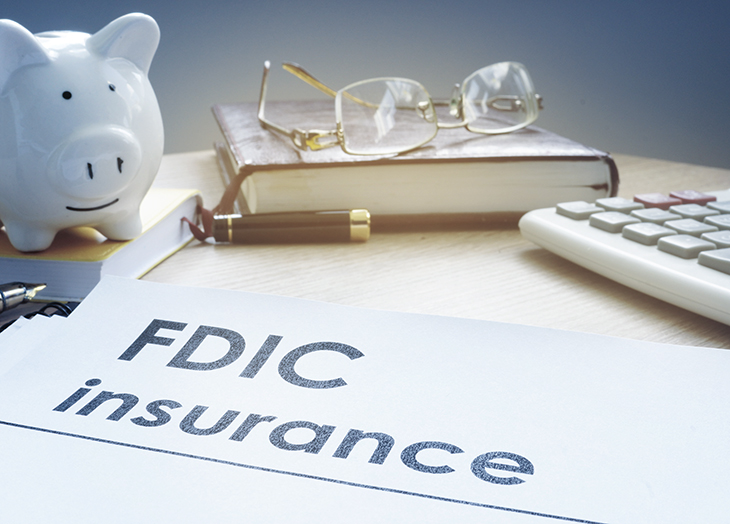FDIC
FEDERAL DEPOSIT INSURANCE CORPORATION
Deposit Accounts Insured by the FDIC
FDIC insurance covers traditional deposit accounts, and depositors do not need to apply for FDIC insurance. Coverage is automatic whenever a deposit account is opened at an FDIC-insured bank or financial institution.
The information below briefly describes the various deposit products offered, the FDIC ownership categories and their applicable insurance coverage limit.


Deposit Products
The following are products which are insured by the FDIC
- Checking accounts
- Savings accounts
- Trust / Escrow accounts
- Money market deposit accounts
- Certificates of deposit (CD)
- Prepaid cards (assuming certain FDIC requirements are met)
FDIC Property Categories
The amount of FDIC insurance coverage you may be entitled to depends on the category of FDIC property. This generally means how you keep your funds in the bank.
Below are the FDIC protection categories, as well as the services that our financier offers you, including individual accounts, certain retirement accounts and employee benefit plan accounts, joint accounts, trust / escrow accounts, business accounts and government accounts.
- Single Account
A deposit account owned by one person, without named beneficiaries, including:
- Checking accounts
- Savings accounts
- Money market deposit accounts
Coverage Limit: All single accounts owned by the same person at the same bank are added together and insured up to $250,000.
- Irrevocable Trust Account / Escrow Account
A deposit account held in connection with an irrevocable trust established by statute or a written trust agreement. The owner contributes deposits or other property to the trust and gives up all power to cancel or change the trust.
Coverage Limit: Irrevocable trusts typically have contingent interests which result in the trust being insured for a maximum of $250,000, regardless of the number of beneficiaries designated. However, the non-contingent interests of a beneficiary in all irrevocable trusts established by the same owner and held at the same bank are added together and insured up to $250,000.
ured up to $250,000.
- Employee Benefit Plan Account
A deposit of a pension plan, defined benefit plan, or other employee benefit plan that is not self-directed. An employee benefit plan account is an account representing funds of a plan where investment decisions are made by a plan administrator (not by the participants).
Coverage Limit: The interests of each participant’s non-contingent interest under the plan is insured up to $250,000 per bank. For plans where the interests are contingent, such as health and welfare plans, the coverage is $250,000 for the plan itself.

- Joint Account
A deposit account owned by two or more people, without named beneficiaries. To qualify for coverage, all owners must:
- Be living people
- Have equal rights to make withdrawals
- Self-directed Keogh plan accounts
- Sign the deposit account signature card (unless the account is a CD). Electronic signatures meet this requirement.
Coverage Limit: Each co-owner’s shares of every joint account at the same insured bank are added together and insured up to $250,000.
- Employee Benefit Plan Account
A deposit of a pension plan, defined benefit plan, or other employee benefit plan that is not self-directed. An employee benefit plan account is an account representing funds of a plan where investment decisions are made by a plan administrator (not by the participants).
Coverage Limit: The interests of each participant’s non-contingent interest under the plan is insured up to $250,000 per bank. For plans where the interests are contingent, such as health and welfare plans, the coverage is $250,000 for the plan itself.
